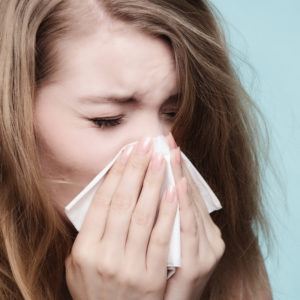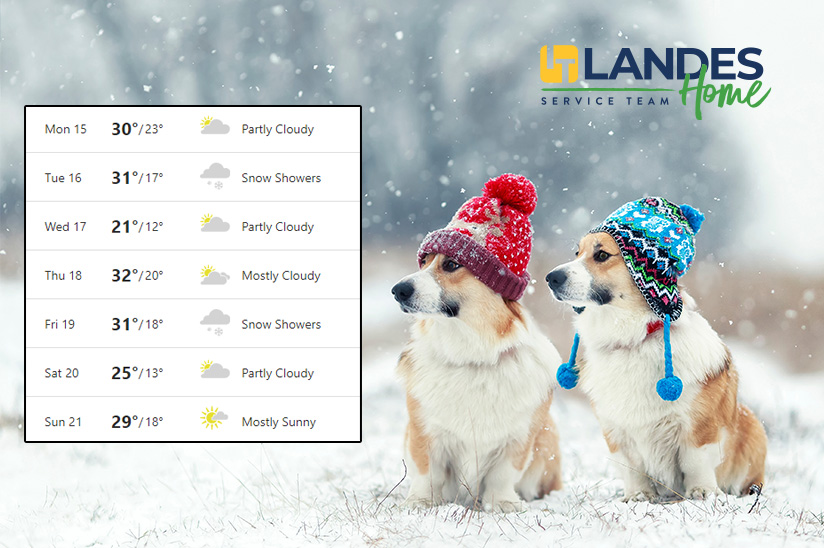Temperatures are going to be low in Bucks and Montgomery Counties this winter! IT Landes…

Dirty ductwork in your home’s HVAC system can aggravate asthma and other respiratory conditions by spreading dust and debris throughout your home. The good news is regularly cleaning air ducts may provide some relief. While the study of the benefits of duct cleaning is still in the early stages, anecdotal evidence from homeowners suggests that it alleviates allergy and asthma symptoms, reduces the amount of dust on furnishings, and improves the efficiency of heating and cooling systems.
What Is Duct Cleaning?
Duct cleaning is a service provided by an HVAC professional in which dust and debris are removed from the ductwork in a forced air heating/cooling system. Technicians use brushes and other tools to loosen buildup inside the ducts, and the loose dust and debris is then vacuumed out of the ductwork, creating a clean, clear path for air flow.
When Is Duct Cleaning Necessary?
Both the Environmental Protection Agency (EPA) and the National Air Duct Cleaners Association (NADCA) offer helpful guidelines to homeowners who are considering having their ducts cleaned. When and how often you should have your ducts cleaned depends on several factors. Specific conditions or events that often prompt homeowners to have their ducts cleaned include:
- smoker(s) in the house
- pets that excessively shed
- water damage/water in the HVAC system
- household members with allergies or asthma
- a recent renovation or remodeling project
- visible mold growth inside the ductwork
- rodent or insect infestation
- installation of a new system
While these circumstances often lead homeowners to have their ducts cleaned, your personal preference also plays a part. Generally, when done correctly by a professional, there is no risk or downside to cleaning your ducts other than the expense. So, if you simply want to have your ducts cleaned for your own piece of mind, that can be reason enough. The cost will vary depending on the size of your home.
What’s Involved in the Process?
Obviously the cleaning process includes all of the ductwork in your HVAC system, but it also involves other components that are subjected to airflow while the system is running, as these are prime places for buildup. Components typically involved in a comprehensive cleaning include:
- supply and return ducts, vents, and registers
- grilles and diffusers
- heat exchanger coils
- drip pans
- fan motors and housing
- air handling unit housing
The process begins with an assessment of the duct layout. A large HEPA vacuum is then connected to a central location of the supply air duct. When the vacuum is turned on, it provides suction to all supply ducts and vents/registers throughout the home. Starting at each vent/register opening, the technician will use a variety of tools, such as brushes and high-pressure air, to loosen the debris and move the duct contaminants into the main trunk line of the duct system. The technician then cleans the main trunk line into the HEPA vacuum system by the same means. Once the supply ductwork is clean, the technician repeats the same process for the return ductwork until the entire system is clean.

After all the ductwork is cleaned, the technician will clean the parts of the healing/cooling system that most commonly become dirty and reduce system efficiency. These parts include the indoor/evaporator coil, the air handler’s blower assembly, and the condensation system. Cleaning these components is a critical part of the process, as they can have a direct effect on the efficiency of your system.
Why Is Cleaning Recommended Prior to a New System Installation?
If you’ve decided to replace your home’s HVAC system, you may also want to consider having your ductwork cleaned at the same time. An HVAC replacement requires a technician to open up areas of the system that would also need to be accessed for cleaning. So, having your ductwork cleaned after the old system has been removed and before the new system has been installed can save on the labor involved in the process.
How to Prevent Buildup in Ductwork
Whether you’ve just had your ductwork cleaned or you’ve decided it’s not time yet, the EPA recommends taking the following steps to minimize dust and debris buildup.
- Use the highest efficiency air filter recommended by your HVAC system’s manufacturer.
- Check your HVAC system’s filter regularly, and replace the filter at least every three months.
- Make sure your annual HVAC service includes cleaning cooling coils and drain pans.
- Dust and vacuum regularly.
To learn more, contact the professionals at IT Landes or Download Duct Cleaning Services sheet. We serve homes in Harleysville, Lansdale, Skippack, Souderton, Telford, and surrounding Pennsylvania areas, and our team can service all your HVAC needs. Call us today at 215-256-4221 or request an appointment online. You can also consult these additional resources:
Should You Have the Air Ducts in Your Home Cleaned?
Source: Environmental Protection Agency
Why Clean Air Ducts?
Source: National Air Duct Cleaners Association
Air Duct Cleaning, Furnace Filters, and Air Quality Q & A
Source: Allergy Consumer Review


